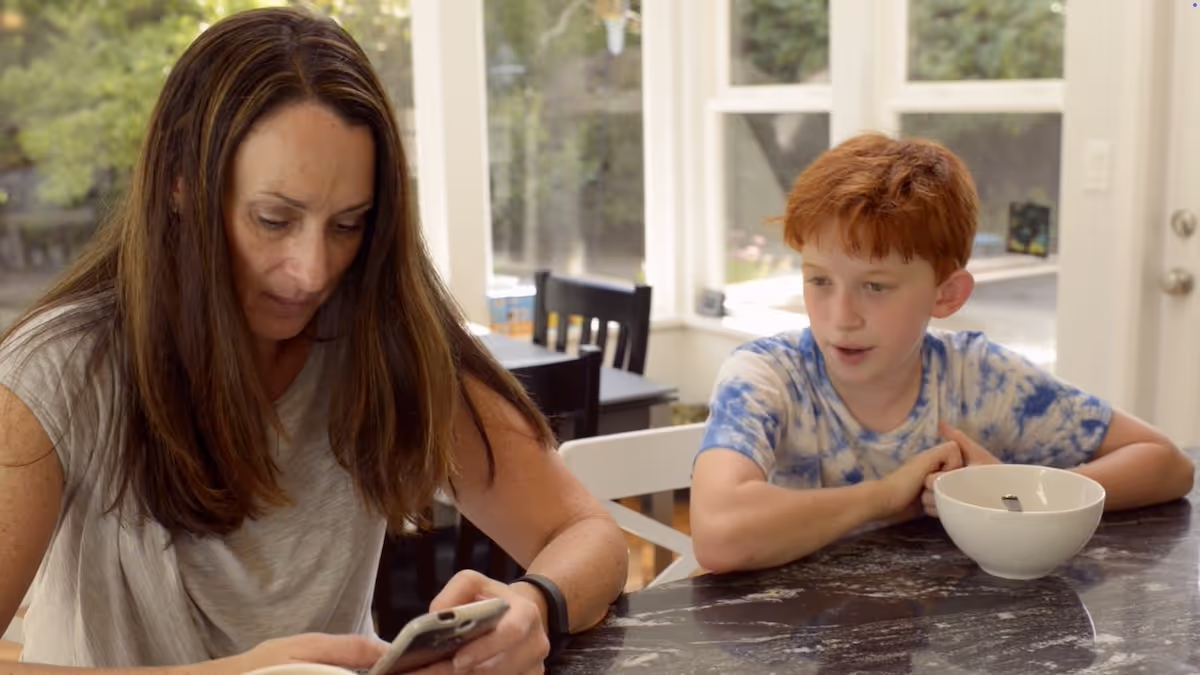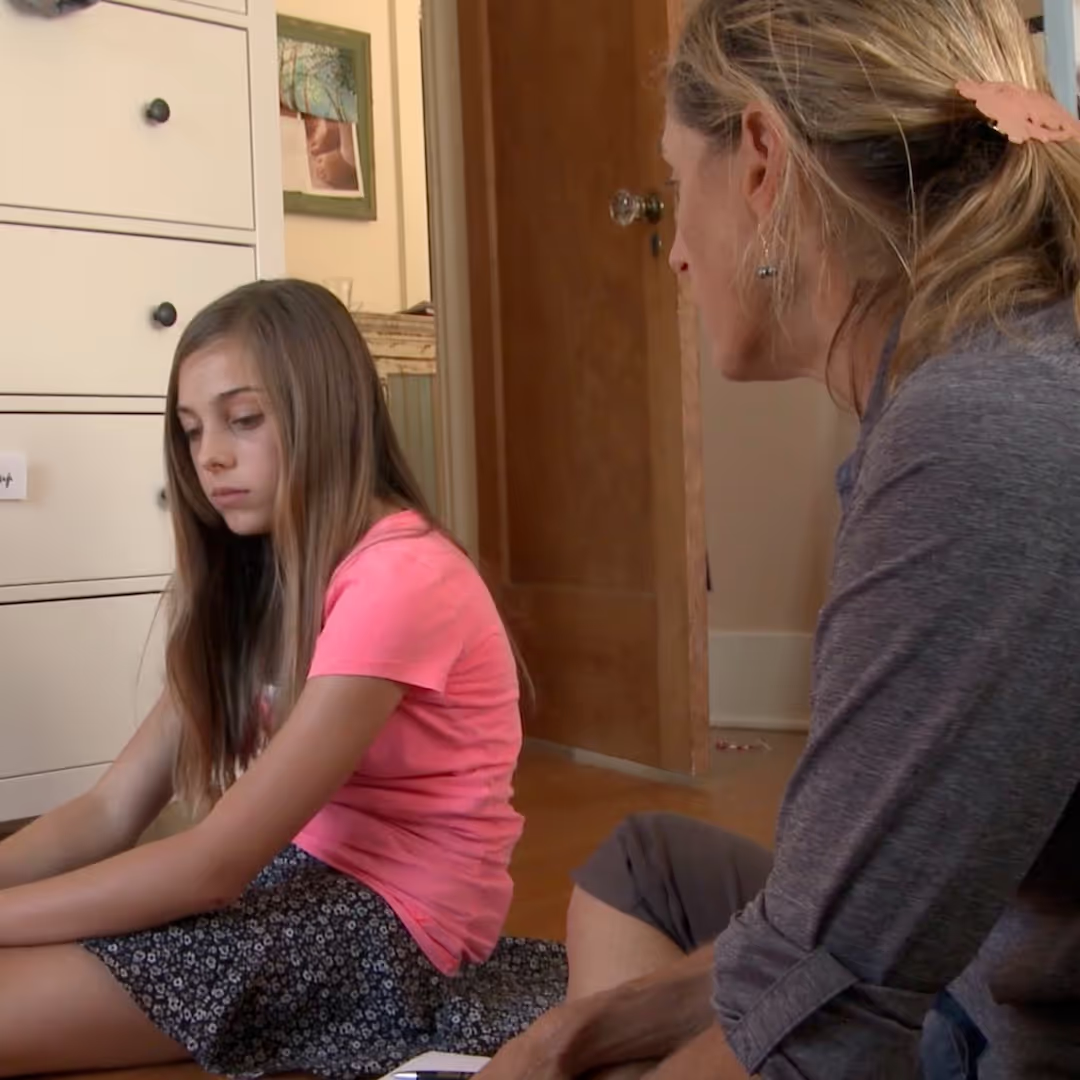



We, as a culture, are not only engaged in screens most of the day, but we are also often using multiple screens at the same time.
In Screenagers, Dr. Dimitri Christakis, Director of Child Development at Seattle Children’s Hospital, says:
"The brain isn’t actually capable of multitasking. In fact, your brain oscillates attention from task 1 to task 2. The young nimble adolescent brain can oscillate back and forth very quickly, but it comes at a cost. One study looked at children and had them watch either a very rapidly-sequenced tv program or a slowly sequenced program or play with crayons and then tested right afterward their cognitive ability and found that the kids who watched the rapidly-paced program performed more poorly than the other two. Overstimulation tires the brain and it tends to function not as well."
Our kids are very accustomed to having several screens out at once. I notice when my family watches a movie at home that they have their phones out and go will go back and forth between screens.
Let's talk about the multi-screen phenomenon for Tech Talk Tuesday:
Photo by casenbina/iStock / Getty Images
As well as our weekly blog, we publish videos like this one every week on the Screenagers YouTube channel
Learn more about showing our movies in your school or community!
Join Screenagers filmmaker Delaney Ruston MD for our latest Podcast

Learn more about our Screen-Free Sleep campaign at the website!
Our movie made for parents and educators of younger kids
Learn more about showing our movies in your school or community!
Learn more about showing our movies in your school or community!
Join Screenagers filmmaker Delaney Ruston MD for our latest Podcast

Learn more about our Screen-Free Sleep campaign at the website!
Our movie made for parents and educators of younger kids
Join Screenagers filmmaker Delaney Ruston MD for our latest Podcast
As we’re about to celebrate 10 years of Screenagers, we want to hear what’s been most helpful and what you’d like to see next.
Please click here to share your thoughts with us in our community survey. It only takes 5–10 minutes, and everyone who completes it will be entered to win one of five $50 Amazon vouchers.

We, as a culture, are not only engaged in screens most of the day, but we are also often using multiple screens at the same time.
In Screenagers, Dr. Dimitri Christakis, Director of Child Development at Seattle Children’s Hospital, says:
"The brain isn’t actually capable of multitasking. In fact, your brain oscillates attention from task 1 to task 2. The young nimble adolescent brain can oscillate back and forth very quickly, but it comes at a cost. One study looked at children and had them watch either a very rapidly-sequenced tv program or a slowly sequenced program or play with crayons and then tested right afterward their cognitive ability and found that the kids who watched the rapidly-paced program performed more poorly than the other two. Overstimulation tires the brain and it tends to function not as well."
Our kids are very accustomed to having several screens out at once. I notice when my family watches a movie at home that they have their phones out and go will go back and forth between screens.
Let's talk about the multi-screen phenomenon for Tech Talk Tuesday:
Photo by casenbina/iStock / Getty Images
As well as our weekly blog, we publish videos like this one every week on the Screenagers YouTube channel
Sign up here to receive the weekly Tech Talk Tuesdays newsletter from Screenagers filmmaker Delaney Ruston MD.
We respect your privacy.

We, as a culture, are not only engaged in screens most of the day, but we are also often using multiple screens at the same time.
In Screenagers, Dr. Dimitri Christakis, Director of Child Development at Seattle Children’s Hospital, says:
"The brain isn’t actually capable of multitasking. In fact, your brain oscillates attention from task 1 to task 2. The young nimble adolescent brain can oscillate back and forth very quickly, but it comes at a cost. One study looked at children and had them watch either a very rapidly-sequenced tv program or a slowly sequenced program or play with crayons and then tested right afterward their cognitive ability and found that the kids who watched the rapidly-paced program performed more poorly than the other two. Overstimulation tires the brain and it tends to function not as well."
Our kids are very accustomed to having several screens out at once. I notice when my family watches a movie at home that they have their phones out and go will go back and forth between screens.
Let's talk about the multi-screen phenomenon for Tech Talk Tuesday:
Photo by casenbina/iStock / Getty Images
As well as our weekly blog, we publish videos like this one every week on the Screenagers YouTube channel


Parenting in this digital age is full of challenges. I imagine many of you are nodding in agreement. And when we look for advice online, it can feel like a sea of perfect experts with perfect advice: “Just follow these three easy steps and everything will fall into place.” In this week’s blog, I share a story about a moment with my daughter Tessa that did not go quite as planned but ended up teaching us both something important.
READ MORE >
Wow! Summer really goes by fast, doesn’t it? Back-to-school is already here for some and not far away for others. Ahead of this school year, I’ve hand-picked four of our most useful blogs. Practical, timely guides to help you set your family up for a healthier, more balanced relationship with technology in the months ahead.
READ MORE >for more like this, DR. DELANEY RUSTON'S NEW BOOK, PARENTING IN THE SCREEN AGE, IS THE DEFINITIVE GUIDE FOR TODAY’S PARENTS. WITH INSIGHTS ON SCREEN TIME FROM RESEARCHERS, INPUT FROM KIDS & TEENS, THIS BOOK IS PACKED WITH SOLUTIONS FOR HOW TO START AND SUSTAIN PRODUCTIVE FAMILY TALKS ABOUT TECHNOLOGY AND IT’S IMPACT ON OUR MENTAL WELLBEING.
